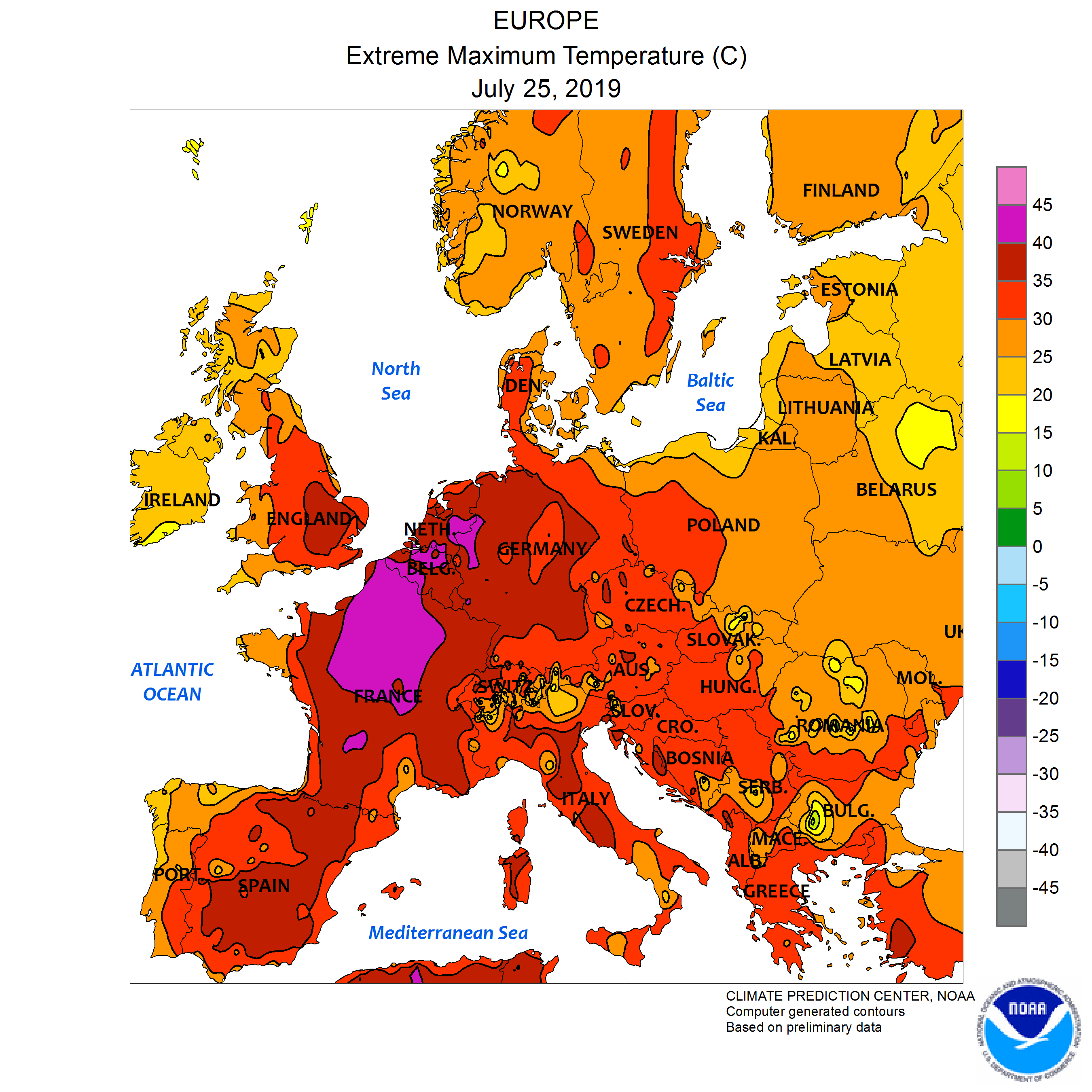
It’s official now. The summer sun did not just bake parts of South Asia, South America, Africa or Europe last month. Rather, it was much more than the blazing sun. The seas, the lands and ice areas all witnessed July 2019 as the hottest month ever recorded.
And it is not just the scorching sun but an unprecedented pace of ice melting and mixed with other manifestations of global warming and climate change tha explain the soaring mercury.
“Much of the planet sweltered in unprecedented heat in July, as temperatures soared to new heights in the hottest month ever recorded. The record warmth also shrank Arctic and Antarctic sea ice to historic lows,” the National Oceanic and Atmospheric Administration revealed Thursday.
According to NOAA scientists, the average global temperature in July was 1.71 degrees F above the 20th-century average of 60.4 degrees.
That means July was the hottest month in the 140-year of temperature recordkeeping,
More worryingly, the National Centers for Environmental Information says the hottest July 2019 follows closely on the previous hottest month, which happened in July 2016.
And that’s not all. Mercury has been tumbling heat records in the last decade.
“Nine of the 10 hottest Julys have occurred since 2005—with the last five years ranking as the five hottest. Last month was also the 43rd consecutive July and 415th consecutive month with above-average global temperatures.”

July 25 2019 Europe max temperatures Credit: National Oceanic and Atmospheric Administration/Wikipedia
According to the organization, the period from January through July produced a global temperature that was 1.71 degrees F above the 20th-century average of 56.9 degrees, tying with 2017 as the second-hottest year to date on record.
It was the hottest year to date for parts of North and South America, Asia, Australia, New Zealand, the southern half of Africa, portions of the western Pacific Ocean, western Indian Ocean and the Atlantic Ocean.
The organization also posted a map on its website explaining climate events that occurred around the world in July 2019.

Credit: National Oceanic and Atmospheric Administration
Concurrently, sea ice has also been at a record low.
“Average Arctic sea ice set a record low for July, running 19.8% below average – surpassing the previous historic low of July 2012.
“Average Antarctic sea-ice coverage was 4.3% below the 1981-2010 average, making it the smallest for July in the 41-year record.
But the planet also had spots that saw some cool temperatures like parts of Scandinavia and western and eastern Russia where temperatures was recoded at least 2.7 degrees F below average.













